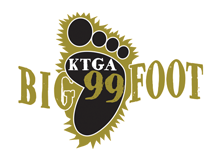Photo – Left Phillip Arnold, Right William Ralston – California Banker/Businessman
The Diamond Hoax is exposed on this date, 1872.
Geologist Clarence King issues his official opinion that a diamond prospect, which attracted nationwide attention, had been “salted”.
The 2004 Guide to Prospecting and Rock Hunting in Wyoming begins with these words:
“Welcome to Wyoming! If you have come to our state to search for gold, diamonds, agates, or other precious metals or gemstones, you will find there is a wonderful opportunity to prospect or rock hound in the Cowboy State.”
Where opportunities for riches exist, so do prospects for swindling. First, a definition of salt, according to Merriam Webster’s definition #3. 3a. to enrich (a mine) artificially by secretly placing valuable mineral in some of the working places. 3b. to add something secretly
1872… a time in the American story when gold and diamond “fever” were as contagious as the cold or flu. People could be hoodwinked. And the West was wild!
Oh, yeah, the Great Diamond Hoax, a few gems…scattered in a spot near Rawlins, came to ensnare California’s biggest bankers and businessmen. So, on a foggy San Francisco day…
A grifter and his sidekick. Phillip Arnold had been born in the same county in Kentucky as Abe Lincoln. Arnold had spent two decades working in mining operations in the West, making enough money to pay for periodic visits to Kentucky. He had bought a farm, married, started a family, and perhaps stashed away a little cash.
In 1870, he was working as an assistant bookkeeper for the Diamond Drill Company, a San Francisco drill maker that used diamond head drill bits. For a bookkeeper, Arnold, then just past 40, showed a surprising interest in the industrial-grade diamonds that kept the drills running. A scheme took form.
Arnold acquired a bag of uncut diamonds, likely taken from his employer, and mixed them with garnets, rubies, and sapphires that were likely bought from Indians in Arizona. He also acquired a partner (sidekick). John Slack was a Mexican War Veteran who had moved to California in 1849 in pursuit of gold.
Arnold and Slack turned up one night at the San Francisco office of George Roberts. Roberts was a businessman who had gained prominence by moving fast and not asking too many questions.
Arnold and Slack looked weather beaten. They brought along a small leather bag. Inside of the bag was something of great value, they said. They continued saying they wanted to deposit the contents into the Bank of California, except for the late hour. The two men were reluctant to say much about the contents of the bag until Arnold allowed himself to slip the words “rough diamonds”. The caper was sprung.
The temptation of quick riches was too much for corrupt and gullible Californians to resist.
Shortly after the pair had plated the story and left, Roberts told the founder of the Bank of California, William C. Ralston, about the diamonds. Ralston had invested in hotels, mills, and even the completion of the transcontinental railroad. This was a make money scheme that went right to the top of the American money world.
Meanwhile, Arnold and Slack were sweetening the pot of lies. They returned with another story. They had made another visit to the diamond field and had returned with 60 pounds of diamonds and rubies said to be worth $600,000. They used an early earnest payment of $50,000 to buy more rubies and rough diamonds to “salt” the scheme.
Upon the pair’s return to San Francisco in the summer of 1871, Arnold and Slack offered to make one more trip to the diamond field, promising to return with “a couple of million dollars” worth of stones. They would allow the businessmen to hold the stones as a guarantee of their investment. At one point, the plotters and investors opened a satchel of jewels on a billiard table inside a mansion in San Francisco. One of those who was being hoodwinked described it as “like a dazzling, many-colored cataract of light”. Because of the weather, one of the investors did not visit the fields in Wyoming until June.
Arnold and Slack, who had been paid a second $50,000 payment, met the investors and boarded a Union Pacific train to Rawlins. Though the spot that Arnold had salted was closer to the Black Buttes, Wyoming station, the swindler wanted to keep the exact location secret. Arnold led the investors on a confusing four-day horseback journey, often pretending to be lost and climbing hills to get his bearings. The party soon became cross and quarrelsome in the hot Wyoming sun, without the comforts of the city.
The six men finally reached the salted mesa at about four o’clock on the afternoon of June 4, 1872. They began to look for diamonds.
Like a mother at a backyard Easter egg hunt, Arnold was extraordinarily solicitous in suggesting where they might dig. Then, suddenly, diamonds were being found everywhere. Jewels of all sorts, diamonds, rubies, emeralds, and sapphires were scattered across the desolate Wyoming landscape.
Arnold collected another $550,000, less expenses, which figures about $8 million, today.
He had more shares coming to him, but he must have sensed his luck had neared the end. He moved his family back to Kentucky from San Francisco in the spring of 1872. Slack was never to be heard from again.
By the time the gig was up, Arnold and Slack were long gone.
Leaving the high-and-mighty men in San Francisco. The men loved to boast that they built this country, somewhat poorer for their get rich scheme.
And on this date, November 28, 1872, geologist Charles King confirmed that geology was and would be an important part of Wyoming’s Founding and its future.













